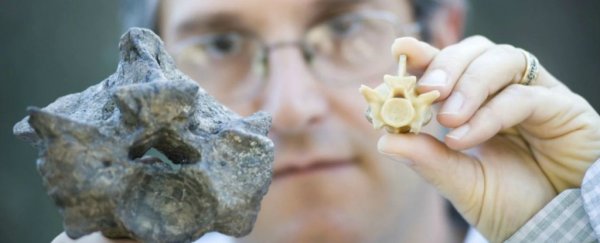Scared of snakes?
The thought of Titanoboa might make you shiver even if you're not.
Imagine a snake 48 feet (14.6 metres) long. Now imagine it slithering through the jungle and eating entire crocodiles.
Don't worry - Titanoboa cerrejonensis isn't on the loose today. But 60 million years ago, the snake reigned supreme.
Now you can get close to a re-creation of this huge snake in Utah. A full-scale model of Titanoboa - complete with a half-swallowed crocodile - is on display at the Monte L. Bean Life Science Museum at Brigham Young University.
Titanoboa didn't kill with fangs or venom. Instead, it crushed its prey to death - appropriate for a creature thought to have weighed 2,500 pounds (1,133 kg).
Fossils of the snake, the largest ever found, were discovered in a Colombian coal mine that contains a rich fossil record of the rain forests that covered Earth during the Paleocene, the period that began when dinosaurs went extinct.
Titanoboa was truly enormous - longer than a school bus - even by the standards of its day, which produced immense animals in moist, steamy conditions.
Visitors to "Titanoboa: Monster Snake" can get to know smaller snakes, too, and examine snakeskins to compare modern reptiles and their ancestors. The free exhibition also features videos and activities for kids.
The lifelike model is on loan from the Smithsonian Institution Traveling Exhibition Service through March 17.
Can't catch it in Utah? Check out Titanoboa at the New York/New Jersey Mineral, Fossil, Gem and Jewellery Show from April 4 through 8.
2017 © The Washington Post
This article was originally published by The Washington Post.
